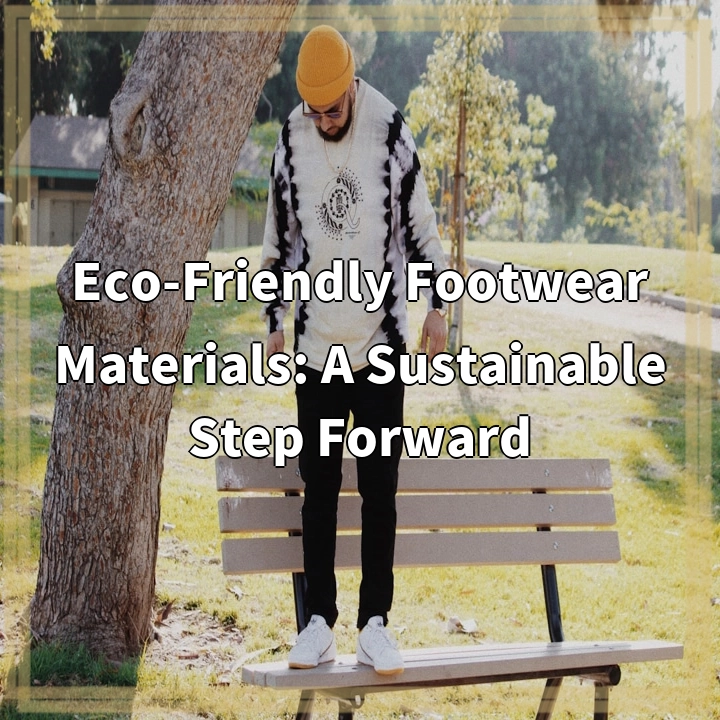
What is Eco-Friendly Footwear Materials?
Eco-friendly footwear materials refer to materials that are produced and used in the manufacturing of shoes and other footwear items, while having minimal negative impact on the environment. These materials are typically sourced, processed, and manufactured using methods that prioritize sustainability, resource conservation, and reduced ecological footprint.
Real-World Problems Associated with Eco-Friendly Footwear Materials
While the use of eco-friendly footwear materials is a step towards sustainability, there are still real-world challenges and problems that need to be addressed:
1. Limited availability
One significant challenge is the limited availability of eco-friendly footwear materials. Compared to conventional materials, such as leather or synthetic fabrics, eco-friendly alternatives are often produced on a smaller scale and may not be as readily accessible for mass production.
2. Higher cost
Eco-friendly materials tend to be more expensive than their conventional counterparts. This is partly due to the limited availability and higher production costs associated with sustainable sourcing and processing methods. As a result, eco-friendly footwear options may be less affordable for some consumers.
3. Durability and performance
Another challenge is ensuring that eco-friendly materials meet the durability and performance expectations of consumers. Some eco-friendly materials may have limitations in terms of strength, flexibility, and water resistance, which can affect their suitability for certain footwear applications.
4. Lack of consumer awareness
Many consumers are not yet fully aware of the environmental impact of conventional footwear materials. As a result, there may be a lack of demand for eco-friendly options. Educating consumers about the benefits of eco-friendly footwear materials and their positive impact on the environment is crucial for driving change in the industry.
5. Recycling and disposal challenges
Eco-friendly footwear materials are often designed to be biodegradable and recyclable. However, there may be challenges in the recycling infrastructure and consumer behavior, which can hinder proper disposal and recycling of these materials at the end of their lifecycle.
Despite these challenges, the growing demand for sustainable and eco-friendly products is encouraging the footwear industry to find innovative solutions. By addressing these real-world problems, the future of eco-friendly footwear materials looks promising in creating a more sustainable and responsible footwear industry.

Solutions to the Real-World Problems of Eco-Friendly Footwear Materials
While there are challenges associated with eco-friendly footwear materials, there are several solutions that can help overcome these issues:
1. Increased investment and research
Increased investment in research and development can lead to the discovery of new eco-friendly materials that are more readily available and cost-effective. This can help expand the range of sustainable options in the footwear industry.
2. Collaboration and partnerships
Collaboration between footwear brands, material suppliers, and sustainability experts can accelerate progress in developing and promoting eco-friendly materials. By working together, stakeholders can pool resources, share knowledge, and create more impactful solutions.
3. Improved technology and innovation
Ongoing advancements in technology can address the performance limitations of eco-friendly materials. Innovations in material engineering and manufacturing techniques can enhance the durability, flexibility, and water resistance of sustainable materials, making them more comparable to conventional options.
4. Consumer education and awareness
Increasing consumer awareness and education about the environmental impact of conventional footwear materials is crucial. Brands and educational campaigns can inform consumers about the benefits of eco-friendly materials, empowering them to make more sustainable choices when purchasing footwear.
5. Recycling infrastructure and circular economy
Developing and improving recycling infrastructure, along with implementing circular economy principles, can address the challenges of proper disposal and recycling of eco-friendly footwear materials. Brands can also take responsibility for the end-of-life management of their products by offering take-back or recycling programs.
By implementing these solutions, the obstacles associated with eco-friendly footwear materials can be overcome, leading to a more sustainable and responsible footwear industry.















